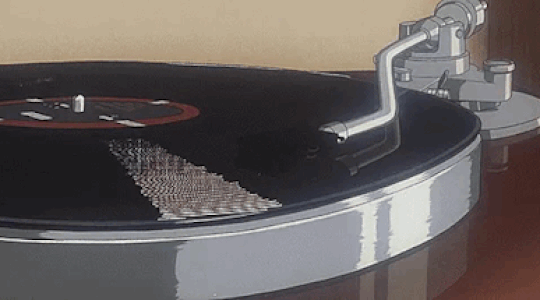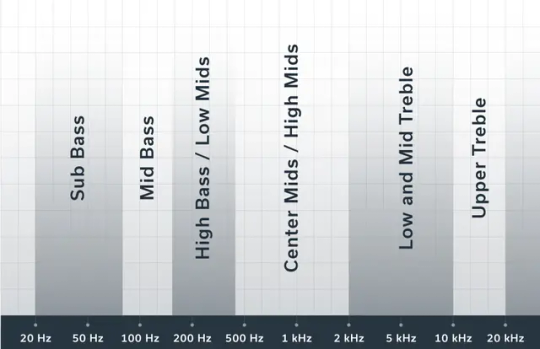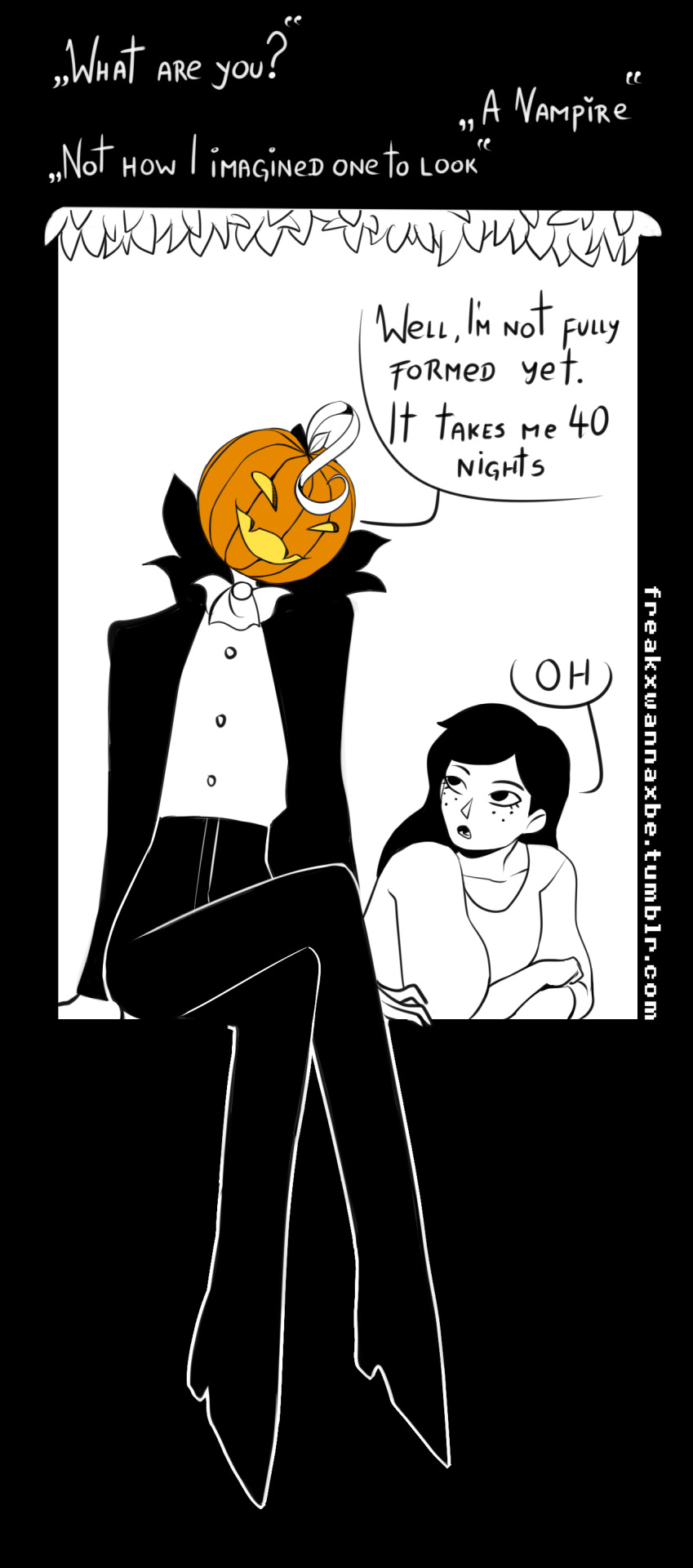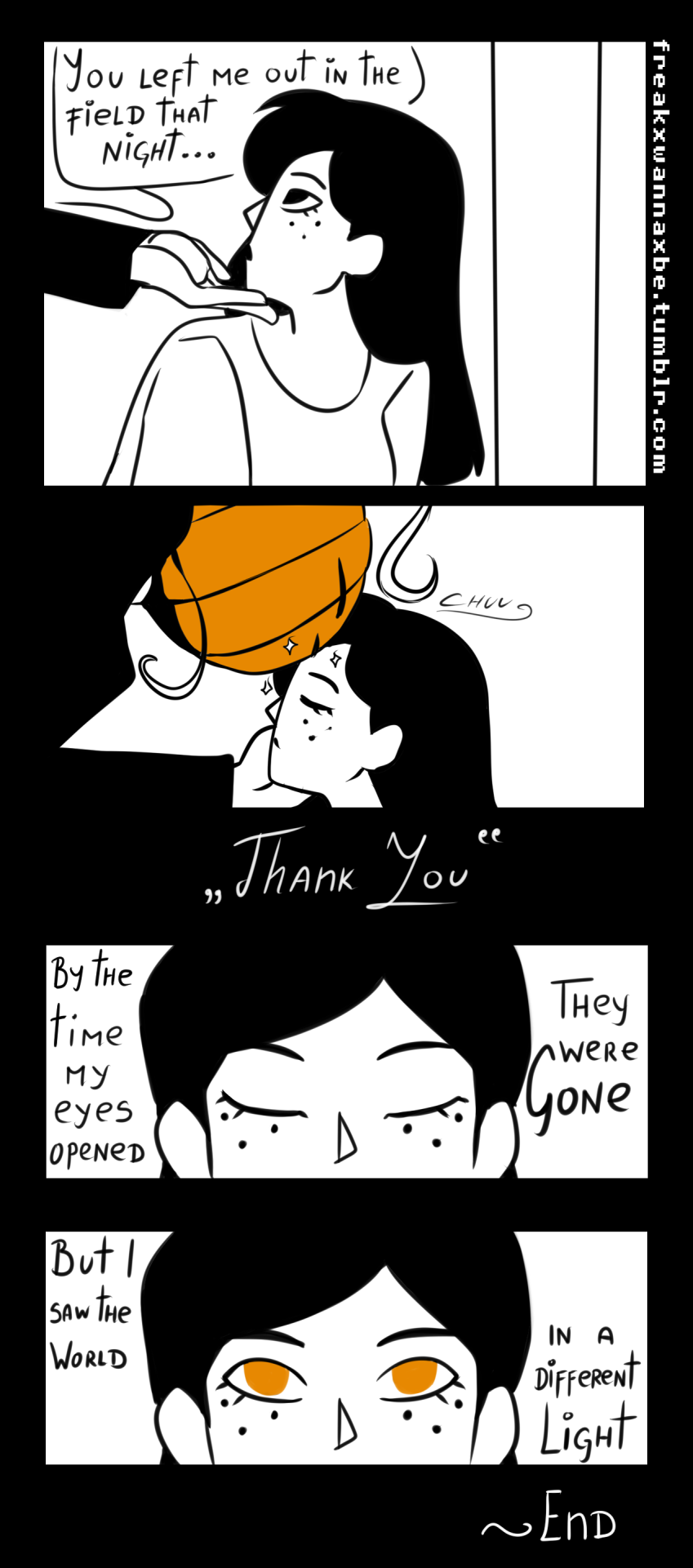Welcome, to Hi-Φ, or Hi-Phi.this is a blog about hi-fi, cars, planes, overall anything cool ;pMain: @blankie5442
Don't wanna be here? Send us removal request.
Text

Thank you so much @pennapolis thank you to my sister @bluuubuns and thank you to everyone this is truly a milestone for me
To turn or to table? That is the question? (part 1/2)

(GIF from the 3rd patlabor movie: WXIII, watch it is over hated imo)
If you are looking to get into vinyl, looking for new ways to experience your music, already are into it but looking to expand your collection or to pick up a new to you turntable. You, my dearly beloved, are in luck. This blog will get you up to speed on the internal machinations of turntables and their differences.
A simple Wikipedia search will yield good information, but there are a couple of things it misses, mainly what I want you to learn from that search is that there are three (3) main types of turntables (known as a phonograph), the Belt drive, the Direct drive and the Idler-wheel drive. Each have pros, all have cons, all three do the same thing - play music from a plastic disc. About said plastic disc, how does it work? And more importantly, how does music get from the disc through the turntable and out of the speakers?? All three turntables have several things in common, such as; the stylus/needle, the tone arm, the cartridge and head shell. But what's most important about them are the differences, mainly, what makes the platter spin.

BELT-DRIVE:
My favourite example of a belt-driven turn table is the Rega planar series of turntables, especially the Rega planar 3 with its exposed belt. As the name implies, the belt-drive system involves a belt to drive the platter. This belt is first connected to a motor. This helps to insulate the platter from the motor, meaning less noise comes through from the motor, as the motor isn't directly connected to the platter.
The belt driven system comes with its own downsides. A belt is a "wear item" meaning that the more it is used, the worse it gets. It wears exponential, meaning it starts off slow but slowly ramps up, old belts lose tension and disintegrate. This is impossible to repair, but usually replacements can be bought, so keep that in mind when buying an older gal. She still deservers a loving home, of course, and belt-drives are very good platforms for high fidelity based system. You want the best sound quality, chances are you're looking for a belt drive.

DIRECT-DRIVE:
Direct-driven systems does away with the belt and simply connects the platter to the motor. Pioneered by Panasonic Technics, this system is commonly used and beloved by Disk Jockies and audiophiles alike. Low in maintenance and high in torque, these bad girls spin up faster than anything else on the market and are favoured for scratching. The best part, you don't need a bespoke DJ turntable to scratch (although recommended, as specially made turntables are able to put up with the abuse). Downsides are that the bigger, often times AC motors, create more noise. Without the suspension of the belt, the vibrations can be heard through the stylus. However, nowadays, new systems isolate the platter from the noise.
Of course, when putting platter to motor and making them one, the thing to look out for is the motor itself. As if that goes, it is bad news and more work will have to be done to simply replace the damn thing. However, as I mentioned, this system requires far less maintenance overall.

This marks the one of part 1. In the next blog post, I will talk about the Idler-Wheel system and basic general maintenance. This is also my second blog, ever. So please tell me where I can improve. Love you all, keep on rocking <3
10 notes
·
View notes
Text
To turn or to table? That is the question? (part 1/2)

(GIF from the 3rd patlabor movie: WXIII, watch it is over hated imo)
If you are looking to get into vinyl, looking for new ways to experience your music, already are into it but looking to expand your collection or to pick up a new to you turntable. You, my dearly beloved, are in luck. This blog will get you up to speed on the internal machinations of turntables and their differences.
A simple Wikipedia search will yield good information, but there are a couple of things it misses, mainly what I want you to learn from that search is that there are three (3) main types of turntables (known as a phonograph), the Belt drive, the Direct drive and the Idler-wheel drive. Each have pros, all have cons, all three do the same thing - play music from a plastic disc. About said plastic disc, how does it work? And more importantly, how does music get from the disc through the turntable and out of the speakers?? All three turntables have several things in common, such as; the stylus/needle, the tone arm, the cartridge and head shell. But what's most important about them are the differences, mainly, what makes the platter spin.

BELT-DRIVE:
My favourite example of a belt-driven turn table is the Rega planar series of turntables, especially the Rega planar 3 with its exposed belt. As the name implies, the belt-drive system involves a belt to drive the platter. This belt is first connected to a motor. This helps to insulate the platter from the motor, meaning less noise comes through from the motor, as the motor isn't directly connected to the platter.
The belt driven system comes with its own downsides. A belt is a "wear item" meaning that the more it is used, the worse it gets. It wears exponential, meaning it starts off slow but slowly ramps up, old belts lose tension and disintegrate. This is impossible to repair, but usually replacements can be bought, so keep that in mind when buying an older gal. She still deservers a loving home, of course, and belt-drives are very good platforms for high fidelity based system. You want the best sound quality, chances are you're looking for a belt drive.

DIRECT-DRIVE:
Direct-driven systems does away with the belt and simply connects the platter to the motor. Pioneered by Panasonic Technics, this system is commonly used and beloved by Disk Jockies and audiophiles alike. Low in maintenance and high in torque, these bad girls spin up faster than anything else on the market and are favoured for scratching. The best part, you don't need a bespoke DJ turntable to scratch (although recommended, as specially made turntables are able to put up with the abuse). Downsides are that the bigger, often times AC motors, create more noise. Without the suspension of the belt, the vibrations can be heard through the stylus. However, nowadays, new systems isolate the platter from the noise.
Of course, when putting platter to motor and making them one, the thing to look out for is the motor itself. As if that goes, it is bad news and more work will have to be done to simply replace the damn thing. However, as I mentioned, this system requires far less maintenance overall.

This marks the one of part 1. In the next blog post, I will talk about the Idler-Wheel system and basic general maintenance. This is also my second blog, ever. So please tell me where I can improve. Love you all, keep on rocking <3
10 notes
·
View notes
Photo

Fei-Yen ‘Virtual On’ SEGA Saturn Support us on Patreon
969 notes
·
View notes
Text
Digital or analog?
First off, Welcome to Hi-Phi.
In this inaugural post, I will highlight the main difference between a fully digitalized amplifier, which is the most common today, to a completely (or almost completely) analog amplifier, plus a little extra, just for you <3. Please enjoy.
PS:please bear in mind this blog is for everyone and I will be explaining as much as possible to the best of my ability. Do not expect an extremely detailed run down!
Analog:

(taken from hi-fi news, Vacuum-packed: the "Airtight" amplifier)
Analog or valved amps were the first amplifiers to be created and are the living embodiment of: Grandpa is old, but he's no slouch! These bad boys can deliver amazing sound at great volume with a lower wattage than the new kids on the block. These things are also very customizable since all the sound depends on the type of vacuum tubes you put in. You want more bass? Change the tubes for a different family. You like the tubes already in the amp, but want more power? Stay in the same family, but switch to the next step-up!
These are the sort of shenanigans that would be harder to do on a digital amp, as you can't just unplug a transistor or a thyristor without having some technical know-how. Speaking of which, one of the glaring (yet stunning) problems with valved amps is in its namesake. The tubes (or valves) are very pretty to stare at, but, they require special treatment. The tubes are made from quartz. Quartz is known for not enjoying oils being rubbed on it, and the skin on our fingies have oils on them. YOU MUST NEVER TOUCH A VACUUM TUBE WITHOUT WEARING GLOVES. If you do, you must shower the tube in surgical spirit and wait for the spirit to evaporate, if you don't, I can almost guarantee that the tube will crack within one heat cycle. Keep a set of cotton gloves with the amp, just in case. Speaking of heat, tubes get hot, and quick, which is either a downside or an upside depending on the person!
Now, let us get technical. As I mentioned above, these amps can still deliver amazing sound with lower wattage, but what does any of that mean?.
To put it simply, Wattage means Power (literally) and the more power the more volume (usually), valved amps can still get loud with low wattage, yet, they shine with lower volumes as they keep their clarity without needing volume. They also usually have a great top end (treble), usually sounding clearer and more sparkly*, while still holding good sub-bass* and bass, of course this depends on the types of tubes you use. However, there is some objectivity to this, as with a valved amp you aren't distorting the sound as much as a digital amp would. Valved amps have the ability to produce smoother peaks* due to there being less digitalization of the music, this depends on how you are playing your music however, as if you are playing off a digital source than the type of file you are using still very much matters as well as the digital to analog converter* (DAC for short) and I've also heard that Upsampling* plays a major part in it, if your DAC is equipped with it.
(*Sparkly, in the audiophile world means a great and clear and defined treble, treble is where the high notes of music live, like Cymbals, flutes, and trumpets. Please refer to fig 1, this image also explains helps to explain sub-bass.)
(*Sub-bass, is the part of the music below the bass, this is where the very low notes in music live, like kick drums, cellos and low notes in bass guitars, please refer to fig.1 to help explain.)
(*Peaks referring to the Peaks of a wave, all sound is a form of a wave, and digitalization usually leaves small distortions or also known as artefacts in the peaks of music, please refer to fig.2)
(*Digital to analog converters, simply turn the 1s and 0s into a wave, which means sound. *Upsampling, uses complicated math that I am deffo not qualified to explain to fill in the gaps of 1s and 0s meaning a larger file size, this isn't detailed as this is a blog about amps not dacs. I If you are still interested, headphonesty this website has a great about dacs)
(fig.1) (taken from: https://www.status.co/blogs/the-journal/explaining-the-audio-frequency-spectrum-bass-mids-and-treble)

(fig.2) (taken from: https://opened.cuny.edu/courseware/lesson/33/student/?section=2)

Digital/Solid state:

(taken from MV audio lab)
Digital amps are a little harder to talk about, as they are not only the most common but also harder to visualize with all their semiconductors and such. I shall still try my best to simplify and remove as much of the subjectivity as possible. Digital amps generally have a lot more “comforts” than valved amps, usually that’s because digital amps are a lot more beginner-friendly thanks to them ridding themselves from expensive tubes and bespoke design. Chances are, if you buy a basic amplifier, you are getting a black (or silver if you are feeling luxurious), if you spring the money or get a real good deal, you will get a cute little screen.
On the other hand, this design isn’t a bad thing, you can virtually fit digital amps everywhere, and you can even really compact models that the tubes simply don’t allow. The lack of tubes also means that your amplifier won’t double as a space heater, no cotton gloves for delicate quartz, and an overall more predictable sound, did I mention Bluetooth?
Bluetooth or Wi-Fi connectivity is extremely comfortable and helps to rid pesky phone Amps and dongles that will affect sound, no wires mean less clutter in a small space. However, even if you have an older digital amp or analog there are DACs that have such features and at a decent price.
Digital Amps offer more power for cheaper, these things and easily push out 80 watts or more from something that can fit in a bag and sometimes a pocket! This power, comes at the cost of the sweet sounds of the tube, and often times, if you only focus on power you loose in the treble clarity and sometimes clarity in general.
Again, always note that with Digital amps, you will get some form of distortion due to said digitalization, meaning that the peaks will be stepped rather than smooth. However, amps nowadays deal quite well with that. You will lose the customizability of the tubes, but in return, usually you will get 2 small knobs for controlling the treble and the bass.
Again, what you lose in smoothness, you will get back in power however, if valved amps are wine, then solid state is whiskey, both can suck or as smooth as hell to the taste. But like I said, it all depends on the taste, and some people will naturally prefer whiskey than wine.
Now I won't go into the different classes of amps and such, but It's important to note that digital amps do have different classes and make-ups. There are some amps to avoid, (or so I've read), mainly the "New class A" technics amps, but the "Class AB" amps should be fine, (again so I have read, I haven't heard any of these Amps.)
Now if you are a beginner, and you probably are if you are reading this, you are probably going to get a digital amp, and I will not blame you. They are everywhere and sound great, even the older Pro stuff sounds damn good today (proud owner of a Kenwood KA-6100). However, let's say you are a person that wants the treble of the analog stuff, but you're a beginner or don't want to spend too much on an amp, you are in luck, Mr. President, there has been a third option.
THE CHEATER OPTION: Hybrid amplifier

(taken from the Mcintosh website, McIntosh MA252)
There is a reason why I called this the "Cheating Option", because like the examples I mentioned above, you will simply get the downsides of both styles of amps. You will need to spend the money to get a good hybrid amp. There are some decent picks and for good money, but I recommend not picking one up for your first proper amp. However, they are a great bridge between the 2 styles of amps, IF you can find a good one for decent money.
I will not talk about them here because I find them so fascinating that I want to talk about them alone in detail another time! However, there is this great blog I found on the matter that sums up the reason on why I wrote about them like I did: https://www.tubecad.com/april_may2001/
The end note:
Thank you so much for reading this decently sized blog, as you will notice I spent a lot of time talking about analog amps, that's because they are rarer and so there isn't an excellent starting point for people who know nothing about Hi-fi (I'm coping here). After all, i never even mentioned squeeze and push-pull set-ups (not to mention, I want to talk about in detail the make-ups of digital amps soon). Again, thank you so much, and I will see all of you wonderful tumblr people soon ;3 love you all, keep on rockin! <3
5 notes
·
View notes
Text

We're (so) back.
Back from my vacation :)
Soft launching my lineless style again, seeing how people react to this.
Also! Tina's eyes are a slightly crossed because it was a mistake that i found wayyy to endearing to fix. Honestly might make it canon…
26 notes
·
View notes
Photo





There is an old belief in Serbian villages and small towns that certain pumpkins (and watermelons), when left outside during a full moon, will turn in to a vampire.
Happy Halloween, everyone!
☆Patreon ☆ Commission info ☆ Buy me coffee ☆ Twitter ☆ Instagram☆
273K notes
·
View notes
















